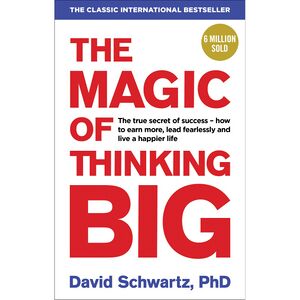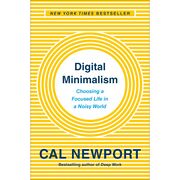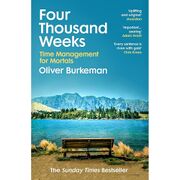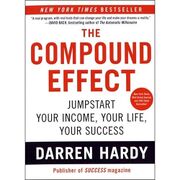The Magic of Thinking Big
🍎 Healthy brain food
"Visualization adds value to everything. A big thinker always visualizes what can be done in the future."
— David J. Schwartz, The Magic of Thinking Big (1959)
Introduction
| The Magic of Thinking Big | |
|---|---|
 | |
| Full title | The Magic of Thinking Big |
| Author | David J. Schwartz |
| Language | English |
| Subject | Success; Personal development; Motivation |
| Genre | Nonfiction; Self-help |
| Publisher | Simon & Schuster |
Publication date | 2 April 1987 |
| Publication place | United States |
| Media type | Print (hardcover, paperback); e-book; audiobook |
| Pages | 192 |
| ISBN | 978-0-671-64678-3 |
| Goodreads rating | 4.3/5 (as of 6 November 2025) |
| Website | simonandschuster.com |
📘 The Magic of Thinking Big is a self-help book by American marketing professor David J. Schwartz, first published by Prentice-Hall in 1959 and later reissued as a Simon & Schuster Fireside paperback in 1987.[1] It teaches readers to set ambitious goals and replace “excusitis,” fear, and hesitation with deliberate action; its 13 chapters include “Believe You Can Succeed and You Will,” “Cure Yourself of Excusitis,” and “Get the Action Habit.”[2] Schwartz writes in a practical, how-to register, promising “tools to change your life” around confidence, creative thinking, and leadership habits. The work has remained in print internationally—including a 2019 Vermilion Life Essentials edition—and Simon & Schuster reports more than six million copies sold worldwide.[3] It is frequently cited among influential self-help titles; for example, Forbes highlighted it in 2014 as one of the “greatest self-help books” of recent decades.[4]
Chapter summary
This outline follows the Simon & Schuster Fireside paperback edition (2 April 1987; ISBN 978-0-671-64678-3).[5][6][7] First edition metadata: Prentice-Hall (Englewood Cliffs, N.J.), 1959; 228 pp.[8][9]
🌟 1 – Believe You Can Succeed and You Will. In Detroit for a Monday job interview, a tool-and-die worker from Cleveland spent the previous evening in his hotel room listing five better-paid acquaintances and realized the gap was initiative and self-belief rather than brains or schooling. He entered the interview and, instead of timidly asking for a small bump, requested $3,500 more than his current pay—and received it; within two years he was known as a top business-getter and was awarded stock when the company reorganized. Belief is presented as a “thought factory” run by two internal foremen: Mr. Triumph, who manufactures reasons you can, and Mr. Defeat, who manufactures reasons you can’t; the practical counsel is to sack the latter and put the former on full-time duty. Framing the day as promising and the task as doable shifts posture, tone, and energy, changing how others respond and how persistently you work. Three concrete guides deepen belief: think success rather than failure when difficulties arise, remind yourself you are better than you think, and set big goals because big plans are often no harder than small ones. Expanding opportunities and demand for leaders reward those who cultivate belief and act, not those who wait for perfect conditions. Expectancy drives behavior: confidence raises initiative, broadens the search for solutions, and attracts cooperation, creating a self-reinforcing loop. Thinking big also changes the size of your attempts—asking for larger roles and proposing bolder ideas—so the expected value of your choices rises even if the risk does not.
🚫 2 – Cure Yourself of Excusitis the Failure Disease. Excusitis is diagnosed with two health vignettes from the same afternoon: after a talk in Cleveland, a thirty-year-old brooded over a “bad heart” no physician could find, while on a flight to Detroit a seatmate with a newly installed plastic heart valve calmly outlined plans to study law in Minnesota. Physicians advise managing emotions rather than ruminating, and Mayo Clinic guidance warns against obsessive tests that reinforce worry. Excuses tend to cluster in four forms—health, intelligence, age, and luck—and each has a treatment that shifts attention to controllable action. For intelligence, the text distinguishes idea makers from mere fact recorders and prescribes simple practices that build practical judgment instead of cataloging trivia. For age, it recounts a trainee named Cecil at forty who chose to become a manufacturers’ representative, and a relative who, at forty-five with three small children, entered a five-year ministerial program in Wisconsin and was later ordained in Illinois. Both stories hinge on time arithmetic: the years will pass regardless, so starting now compounds advantage. Luck is reframed as outcomes shaped by preparation, persistence, and a readiness to move when openings appear, not as fate. Trading excuses for responsibility shifts you from an external to an internal locus of control, which raises effort and resilience. Clearing excusitis separates real constraints from self-imposed ones and gives thinking big room to operate.
🛡️ 3 – Build Confidence and Destroy Fear. Navy training during World War II required nonswimmers to jump—not dive—from a board about six feet above a pool into eight or more feet of water while several expert swimmers stood by; many froze until they were nudged off, and the fear evaporated once they surfaced. The lesson is direct: decisive movement dissolves anxiety, while postponement and indecision fertilize it. A retail buyer in his early forties offers numbers to match the feeling—his department was down 7% while the store was up 6%—and replacing vague hope with concrete steps reversed the slide. Confidence is treated as learned, not innate, and the mind is likened to a memory bank: the deposits you make determine what you can withdraw when pressure arrives, so store experiences that reinforce capability instead of replaying a private museum of horrors. Social fear shrinks when you put people in proper perspective—others are more like you than different—and when you practice actions that project energy: sit up front, make real eye contact, walk 25% faster with head up, speak up, and smile. A table of “fear–action” pairs translates this into wardrobe-and-workbench moves, from upgrading appearance to making first contacts. Exposure and behavioral activation create information and small wins that dilute amorphous dread, while deliberate positive retrieval prevents rumination from eroding nerve. Confident signals and quick, constructive actions widen your opportunity surface, attract allies, and make ambitious targets feel workable.
🧠 4 – How to Think Big. Recently I chatted with a recruitment specialist for one of the nation’s largest industrial organizations. Four months each year she visits college campuses to screen graduating seniors for a junior-executive training program, interviewing eight to twelve candidates a day, most in the upper third of their class. She looks for motivation to run major projects or manage a branch, yet many fixate on the retirement plan and whether they’ll have to move, treating success as mere security. That small frame means there’s less competition than people think for truly rewarding responsibility, so I press them to raise their sights. I show how self-deprecation leaks through posture and language, and I teach the big-thinker’s vocabulary—words that picture growth, possibility, and leadership. I also ask them to see their present job as important, to visualize what can be rather than what is, and to ignore trivia by asking, “Is it really important?” When you upgrade the size of your target, your questions, tone, and effort expand with it, and other people respond in kind. Expectancy fuels initiative, and initiative compounds into larger opportunities—thinking bigger quietly lifts the expected value of every choice you make. How big we think determines the size of our accomplishments.
🎨 5 – How to Think and Dream Creatively. In training sessions I often test belief by asking whether it’s possible to eliminate jails within the next thirty years; when the group says “yes,” we rapidly generate dozens of concrete proposals—seventy-eight on one count—but when they say “no,” the mind shuts and hunts excuses. I give the same assignment to individuals who feel stuck, like the young man who wanted to return to university; once he decided it was possible and let that thought dominate, a workable plan emerged, and he soon finished his degree and stepped into a management-trainee role. To contrast rigid with creative thinking, I describe an executive who insisted there was one “best way” to sell and nearly wrecked his firm, then cite Crawford H. Greenewalt of E. I. du Pont de Nemours telling Columbia University there are many ways to do a good job. Creative power grows when you ban failure words—“impossible,” “won’t work,” “no use trying”—seek diverse inputs, and put ideas in salable form with notes, sketches, or models. Belief primes the brain to search for methods rather than alibis; framing a goal as doable switches cognition from defense to exploration. Variety and visualization supply raw material, while writing and testing give ideas traction in the real world. WHEN YOU BELIEVE, YOUR MIND FINDS WAYS TO DO.
🪞 6 – You Are What You Think You Are. A policeman quoted in the American Institute of Men’s and Boys’ Wear “Dress Right. You Can’t Afford Not To!” campaign admits people judge by appearance; I apply the same rule to adults because your look “talks” to others and to yourself. On the selling floor one customer hears, “Yes sir, may I serve you?” while another is ignored—the signals each person broadcasts explain the difference. I recommend simple, visible upgrades—pressed suit, shined shoes, neat grooming—because an old psychology professor was right: dressing sharp helps you think sharp. Beyond appearance, I urge you to treat your work as important; the classic three-bricklayer story shows how a cathedral grows in the mind before it rises on the site. To keep self-respect humming, build a short “sell-yourself-to-yourself” commercial and read it aloud daily; Tom Staley did and watched his confidence and results climb. As you improve your self-definition, behavior follows—voice steadies, decisions quicken, and others mirror that higher estimate back to you. Self-labeling sets a feedback loop: think first-class and you act first-class, which earns first-class treatment and chances. You are what you think you are.
✈️ 7 – Manage Your Environment: Go First Class. In a training session I asked a group of trainees to name one time they were penny-wise and pound-foolish; the examples came fast—a “new” automatic transmission from an alley garage that failed after 1,800 miles, a bargain accountant who brought trouble with the Bureau of Internal Revenue, and months of greasy-spoon lunches replaced by a businessman’s lunch at one of the best restaurants in town that cost only a little more but delivered real food, service, and atmosphere. From there the lesson widens: the mind feeds on its environment, and conversation is a main course—healthy talk energizes you; gossip is thought poison. A simple self-test exposes a taste for rumor and helps you throw it out before it corrodes judgment and reputation. Make the setting work for you: seek “psychological sunshine” by circulating in new groups, take advice from people who are succeeding, and refuse to let small-thinking acquaintances hold you back. Choose quality over clutter—one good pair of shoes beats three second-class pairs—and remember that others rate you for quality, often subconsciously. The larger theme is behavioral: what you repeatedly see and hear becomes “mind food” that sets your standards, vocabulary, and horizon line. And when you choose first-class surroundings and services, you signal higher expectations to yourself and invite better treatment from others, which compounds into bigger opportunities. Go first class in everything you do. You can’t afford to go any other way.
😊 8 – Make Your Attitudes Your Allies. A donation drive inside one business shows the math: one year employees gave $94.35 to the Red Cross; the next year, with an enthusiastic captain on the same payroll, they gave almost $1,100—an increase of roughly 1,100 percent. Attitude broadcasts before words do; a five-word phone greeting can say “I like you and my work,” or it can warn “you’re a bother,” and listeners respond accordingly. Popular culture even carries the point—Bing Crosby’s “You Don’t Need to Know the Language to Say You’re in Love” illustrates how feeling gets through without vocabulary. To turn feeling into force, grow three specific attitudes: “I’m activated,” “You are important,” and “Service first,” each backed by practices—from lifting your smile, handshake, and “thank yous,” to calling people by name, to giving more value than is expected. Professor Erwin H. Schell called attitude the catalyst that makes abilities fully effective; the classroom vignette with a dull history professor proves the reverse. Numbers reinforce the mechanism: enthusiasm and respect multiply effort and cooperation, while boredom and indifference shut both down. In the larger frame of thinking big, attitudes create self-fulfilling conditions—energy attracts energy, and service attracts returns. Attitudes are mirrors of the mind. They reflect thinking.
🤝 9 – Think Right Toward People. Picture a committee weighing candidates for a promotion or new post: in nine cases out of ten, the first and heaviest factor discussed is likability, even in universities considering professors. That emphasis has a method behind it—people lift the person they like and trust, and no one has time to drag a reluctant colleague rung by rung up the ladder. To become easier to lift, Lyndon Johnson’s ten-point plan—remember names, be comfortable to be around, don’t be a know-it-all, heal misunderstandings, and so on—turns goodwill into a daily habit. Initiative helps too; approaching twenty-five strangers by an elevator produced twenty-five friendly replies, showing how a pleasant remark raises both people a degree. The mind is framed as a broadcasting station with two channels: “P” for positive and “N” for negative; tuning to “P” after a boss’s critique leads to improvement and better rapport, while “N” leads to conflict and mistakes. A Life-magazine example from 15 October 1956 has Benjamin Fairless of U.S. Steel modeling resilient thinking after setbacks—asking how to become worthy of the next opportunity instead of sulking. Reciprocity and expectation do the work: assume value in others and you elicit cooperative behavior; stew in suspicion and you create the treatment you feared. Generous, human judgment is the cheapest lubricant for progress and the surest way to widen your support. Success depends on the support of other people.
⚡ 10 – Get the Action Habit. A sharp line separates Mr. Activationist, who does, from Mr. Passivationist, who plans to do but doesn’t—illustrated by C.D., who spends ten years saying he will start a business yet stays at the Customs Office. Action reshapes environments: in one neighborhood a resident named Harry crusades—cleaning vacant lots, organizing garden clubs, planting trees, building a playground and a community pool—and converts a slipping subdivision into a first-class community. Leaders look for doers, asking only “Will she follow through?”; the passive person never earns that trust. Don’t wait for perfect conditions; start mechanically, speak up, volunteer, and fix the next visible piece of work. Use action to conquer fear rather than rituals that merely postpone it. Small moves generate feedback that reduces uncertainty and builds self-efficacy, and visible motion attracts allies who multiply progress. Big thinking here is kinetic: prove the scale of your ambition by moving now, not by drafting perfect plans. Do what you fear, and fear disappears.
🔄 11 – How to Turn Defeat into Victory. Skid row, the median performer, and the standout executive often share similar setbacks; what differs is their response. One businessman turns blindness into an asset that prevents snap judgments about people, opening doors rather than closing them. A seasoned investor swaps “get rich quick” mistakes for a disciplined review of losses, converting tuition paid to the market into rules he can use. Five guideposts follow: study setbacks, practice constructive self-criticism, stop blaming luck, blend persistence with experimentation, and find the good in every situation. “Mr. Success” bounces up, learns, forgets the beating, and moves on; “Mr. Mediocre” crawls away and stays wary. Assign failure to fixable causes and effort increases; assign it to fate and capacity shrinks. Thinking big treats losses as data that enlarge judgment rather than verdicts on identity. Remember, there is a good side in every situation.
🎯 12 – Use Goals to Help You Grow. Dave Mahoney climbs from a mailroom job to an ad-agency vice presidency by twenty-seven and becomes president of Good Humor at thirty-three, crediting clear targets for his trajectory. Goals function like an automatic pilot: create an image of yourself ten years from now, write it down, and let it steer countless small choices. Pair the long view with the “next mile” method—Eric Sevareid’s 140-mile trek from the Burma–India border and his 2,000-plus scripts come one paragraph, one hour, one step at a time. Translate vision into a thirty-day improvement guide with concrete items—limit TV to sixty minutes, cut gossip, practice initiative—and renew it monthly. Use monthly quotas to convert ambition into throughput, and invest in idea starters and continuing education so your goal has fuel. Future-self salience and chunking reduce overwhelm while sustaining momentum; repeated small wins ratchet identity upward. Thinking big becomes practical when you scaffold it with plans that pull you forward today. Your life is too important to be left to chance.
🧑✈️ 13 – How to Think like a Leader. Four rules anchor leadership: trade minds with the people you want to influence; handle situations the human way; think and push for progress; and make time for solitary thinking. Case studies show the cost of ignoring perspective: Ted B., a TV copywriter, makes children’s shoe commercials that 96 percent of viewers dislike because he designs for people like himself; Joan, a ready-to-wear assistant buyer, stocks what she prefers rather than what low-to-middle-income customers will buy. Perspective-taking also informs strategy: a small electronics firm prices an “unblowable” fuse at $1.25 and plans mass media, but only by thinking like retailers and users can it choose the right channel and message. Being “human” means courtesy and fairness that earn durable cooperation; thinking progress requires constant “How can we do it better?”; and “managed solitude”—daily time to think alone—builds judgment. Empathy, fairness norms, and deliberate reflection combine to create what others experience as trustworthy direction. Big thinking here is disciplined perspective plus quiet time that turns noise into insight. Remember, the main job of the leader is thinking.
Background & reception
🖋️ Author & writing. David J. Schwartz was a professor of marketing at Georgia State University and president of Creative Educational Services, a leadership-development consultancy.[1] He died in 1987, the same year Simon & Schuster issued the widely distributed Fireside paperback edition.[1] The book’s method is organized as practical how-to chapters on belief, curing “excusitis,” building confidence, creative thinking, goal-setting, and leadership.[2] Publisher catalog copy describes the register as motivating and tool-focused rather than academic. An unabridged audiobook from Simon & Schuster Audio broadened access to the title in 2015.[3]
📈 Commercial reception. Simon & Schuster reports that the book has sold more than six million copies worldwide.[3] The title has stayed in print across markets, including a 2019 UK Vermilion Life Essentials reissue. Major outlets continue to place it on business reading lists—for example, Forbes’s “30 must-read business books for 2021” and Business Insider’s recommendations from rising industry figures in 2020.[10][11]
👍 Praise. Forbes included the book in a 2014 roundup of the “greatest self-help books,” highlighting its emphasis on respectful, people-first success.[4] A 2017 Forbes column recommended it as a concise, practical reminder that “success comes from thinking big.”[12] The Times of India has repeatedly featured the title in lists of inspirational or positive-thinking books for general readers, underscoring its enduring popular appeal.[13]
👎 Criticism. Critics of positive-thinking manuals—often grouping Schwartz’s book with that tradition—argue that unqualified optimism can oversimplify causality and hinder realism; The Guardian’s Tim Lott contends that accepting reality may be more helpful than “positive thinking.”[14] Experimental research by Gabriele Oettingen and colleagues finds that indulging in positive fantasies can reduce effort and achievement, complicating straightforward “think big” prescriptions.[15] Barbara Ehrenreich’s book-length critique of the “cult of positive thinking” likewise warns of harms when optimism substitutes for evidence-based action.[16]
🌍 Impact & adoption. The book continues to surface in executive and entrepreneurship circles: Forbes Councils members list it among recommended titles for building a business, and Forbes has featured it in annual business-book roundups.[10][17] Forbes has also reported that entrepreneur Tim Ferriss keeps a copy on his shelf as a formative text that helps him reset his thinking, illustrating its continued influence among high-profile practitioners.[18] Business Insider has likewise documented contemporary business leaders recommending the book as part of their core reading.[11]
Related content & more
YouTube videos
CapSach articles
Enjoyed this page?
📚If this page The Magic of Thinking Big inspired or helped you today, a small coffee helps us keep creating and sharing more. Your support truly matters.👏
References
- ↑ 1.0 1.1 1.2 "David Schwartz". Simon & Schuster. Simon & Schuster. Retrieved 5 November 2025.
- ↑ 2.0 2.1 "The magic of thinking big". WorldCat. OCLC. Retrieved 5 November 2025.
- ↑ 3.0 3.1 3.2 "The Magic of Thinking Big (Unabridged Audio)". Simon & Schuster. Simon & Schuster Audio. Retrieved 5 November 2025.
- ↑ 4.0 4.1 Caprino, Kathy (21 March 2014). "What The Greatest Self-Help Books Of The Last Decades Can Teach You In 7 Minutes". Forbes. Retrieved 5 November 2025.
- ↑ "Magic Of Thinking Big (Fireside ed.)". Google Books. Simon & Schuster. 2 April 1987. Retrieved 5 November 2025.
- ↑ "The magic of thinking big — 1st Fireside ed". Boulder Public Library Catalog. Boulder Public Library. Retrieved 5 November 2025.
- ↑ "The magic of thinking big. 1st Fireside ed". NDL Search. National Diet Library (Japan). Retrieved 5 November 2025.
- ↑ "The magic of thinking big". WorldCat. OCLC. Retrieved 6 November 2025.
- ↑ "The magic of thinking big. (Record no. 1576)". CamTech University Library. CamTech University. Retrieved 6 November 2025.
- ↑ 10.0 10.1 Cook, Jodie (16 December 2020). "30 Must-Read Business Books For Upping Your Game In 2021". Forbes. Retrieved 5 November 2025.
- ↑ 11.0 11.1 "The Best Real-Estate Career Books, According to Rising Stars". Business Insider. 15 December 2020. Retrieved 5 November 2025.
- ↑ Denning, Stephanie (31 July 2017). "The Best Books I Read Last Month". Forbes. Retrieved 5 November 2025.
- ↑ "7 inspirational books that will change your life for the better". The Times of India. 31 January 2022. Retrieved 5 November 2025.
- ↑ Lott, Tim (19 March 2019). "The best form of self-help is … a healthy dose of unhappiness". The Guardian. Retrieved 5 November 2025.
- ↑ Kappes, Heather Barry; Oettingen, Gabriele (2011). "Positive fantasies about idealized futures sap energy". Journal of Experimental Social Psychology. 47 (4): 719–729. doi:10.1016/j.jesp.2011.02.003. Retrieved 5 November 2025.
- ↑ Ellmann, Lucy (8 January 2010). "Smile or Die: How Positive Thinking Fooled America and the World – review". The Guardian. Retrieved 5 November 2025.
- ↑ "Top 48 Business Books Forbes Councils Members Recommend on Building a Business". Forbes Councils. Forbes Councils. 27 August 2020. Retrieved 5 November 2025.
- ↑ Glazer, Robert (16 June 2020). "This New Book Has A Tip That Will Change Your Life". Forbes. Retrieved 5 November 2025.






